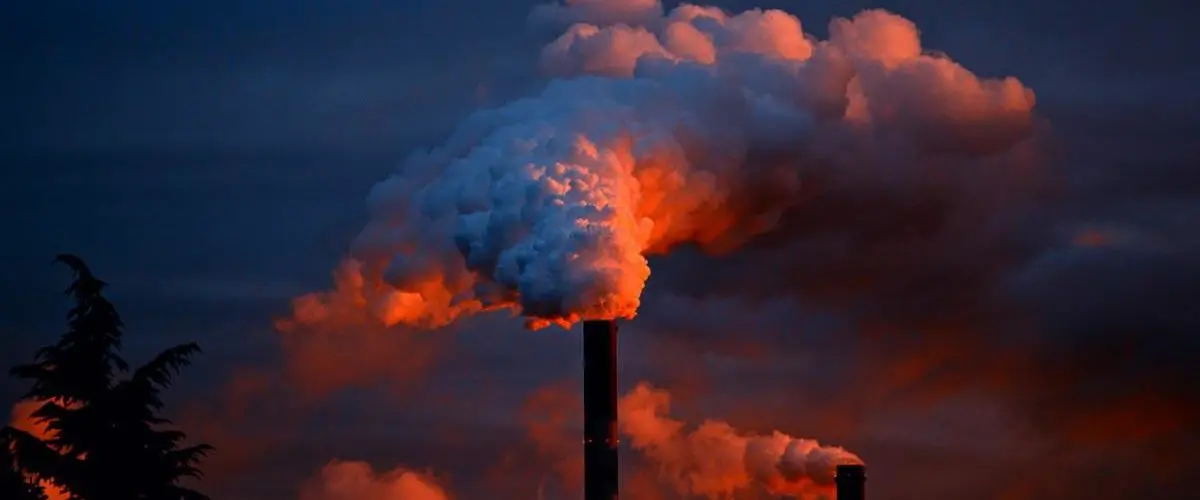Groups urge bigger targets, more equity as RGGI states consider changes
As the Regional Greenhouse Gas Initiative, known as RGGI, undergoes a thorough review by participating states, environmental advocates are demanding more ambitious emission reduction targets and a mandate for equitable distribution of the revenues.
This is the third time since RGGI’s kickoff in 2009 that the states have reviewed the cap-and-invest program. With climate change predictions looking more dire than ever, advocates say it’s time to seriously ramp up the program’s carbon emission reduction targets.
“In both of the previous program reviews, the states lowered the emissions cap and improved the program,” said Jordan Stutt, carbon program director at the Acadia Center. “But neither of those reviews delivered sufficient levels of improvement. We would like to see it decrease more rapidly, and ultimately get us to zero emissions.”
Under RGGI, the participating states set a regional limit on the amount of carbon pollution that power plants are allowed to emit, and sell emission “allowances” up to that limit at quarterly auctions. The cap declines over time, gradually bringing down emissions.
The proceeds from the auctions are shared by the states. So far, the program has raised more than $4.7 billion, most of which has been invested in energy efficiency and clean energy projects.
The participating states are Connecticut, Delaware, Maine, Maryland, Massachusetts, New Hampshire, New Jersey, New York, Rhode Island, Vermont and Virginia. Pennsylvania is in the process of formulating rules that will allow it to join.
Power plant emissions across those states are down by more than half, although there is disagreement as to how much of that reduction was driven by sharp declines in the price of natural gas and renewable energy rather than RGGI.
“So far, RGGI has had pretty low auction prices,” said Kenneth Gillingham, an economics professor specializing in environmental and energy issues at Yale University. “It’s a nudge. It has reduced emissions, but I don’t think it’s a dramatic effect.”
The 2021 cap under RGGI is 119.8 million short tons. It declines by 3.655 million tons every year through 2030 and is currently supposed to hold steady after that at approximately 86.9 million tons.
But environmental advocates say that schedule is too meager, especially given the aggressive greenhouse gas reduction and renewable energy goals set by many of the participating states.
“The RGGI states should evaluate cap levels that are, at a minimum, consistent with these state goals to maintain their position as national leaders in decarbonizing electricity generation,” said Drew Stilson, a senior policy analyst at the Environmental Defense Fund, in written comments submitted during a program review stakeholder meeting last month.
Acadia is also calling for the elimination or redesign of RGGI’s so-called “cost containment reserve.” Under that mechanism, if auction prices reach a certain level, additional carbon allowances beyond the cap are released from the reserve.
Stutt says it is “unacceptable” to allow for that additional polluting. He noted that at the last RGGI auction, held earlier this month, the allowances sold for $13 each, a record high and a stronger incentive for the market to generate electricity from clean sources. But because that sum also matched the trigger price for the cost containment reserve, an additional 3.9 million allowances were released.
“We contend that if the cost containment reserve is maintained, the price triggers must be significantly higher than they are,” Stutt said. “Carbon prices are still very low compared to other programs across the globe.”
Gillingham said the reserve is intended to act as a backstop to prevent the RGGI program from becoming too expensive for ratepayers — “if it raises rates too much, it might not last.” But he agreed that a trigger price of $13 is too low “if the goal of the policy is really to ensure that it’s reducing emissions in a substantial way.”
Advocates are also hoping the states will take a serious look at whether the program is adequately benefiting the communities that are most impacted by air pollution. RGGI has so far deferred to individual states as to how to spend their share of the auction proceeds. But advocates are seeking a requirement that states allocate a minimum of perhaps 40% of proceeds to environmental justice communities.
“It’s frustrating that we haven’t seen progress on this yet,” Stutt said. “I think it would be inexcusable for the states to forego this opportunity to build equity into the program.”
The Northeast Regional members of the Climate Justice Alliance are urging the states to collect data identifying where emissions reductions are happening, and whether the program is improving or worsening air quality in environmental justice communities.
States are “certainly paying more lip service” to equity issues this time around, said Basav Sen, a climate policy expert at the Institute for Policy Studies, which is a member of the alliance. “But the primary problem with the way they approach equity is that they view it as something to address after the emissions have occurred. And those emissions happen in an inequitable way.”
In addition to tightening the emissions cap and boosting the trigger price for the reserve, Sen said the program should also stop allowing emitters to store allowances for future use.
“It makes the cap completely meaningless,” he said. “They should just expire. It’s supposedly a way to allow polluters to reduce emissions in the most cost-efficient way possible. But honestly, we are way past the point of worrying about costs for polluters. We are too far into the climate crisis for that.” The review process will continue throughout next year, with a draft of the updated model rule expected next fall.
Read the full article at Energy News Network here.




















Follow us